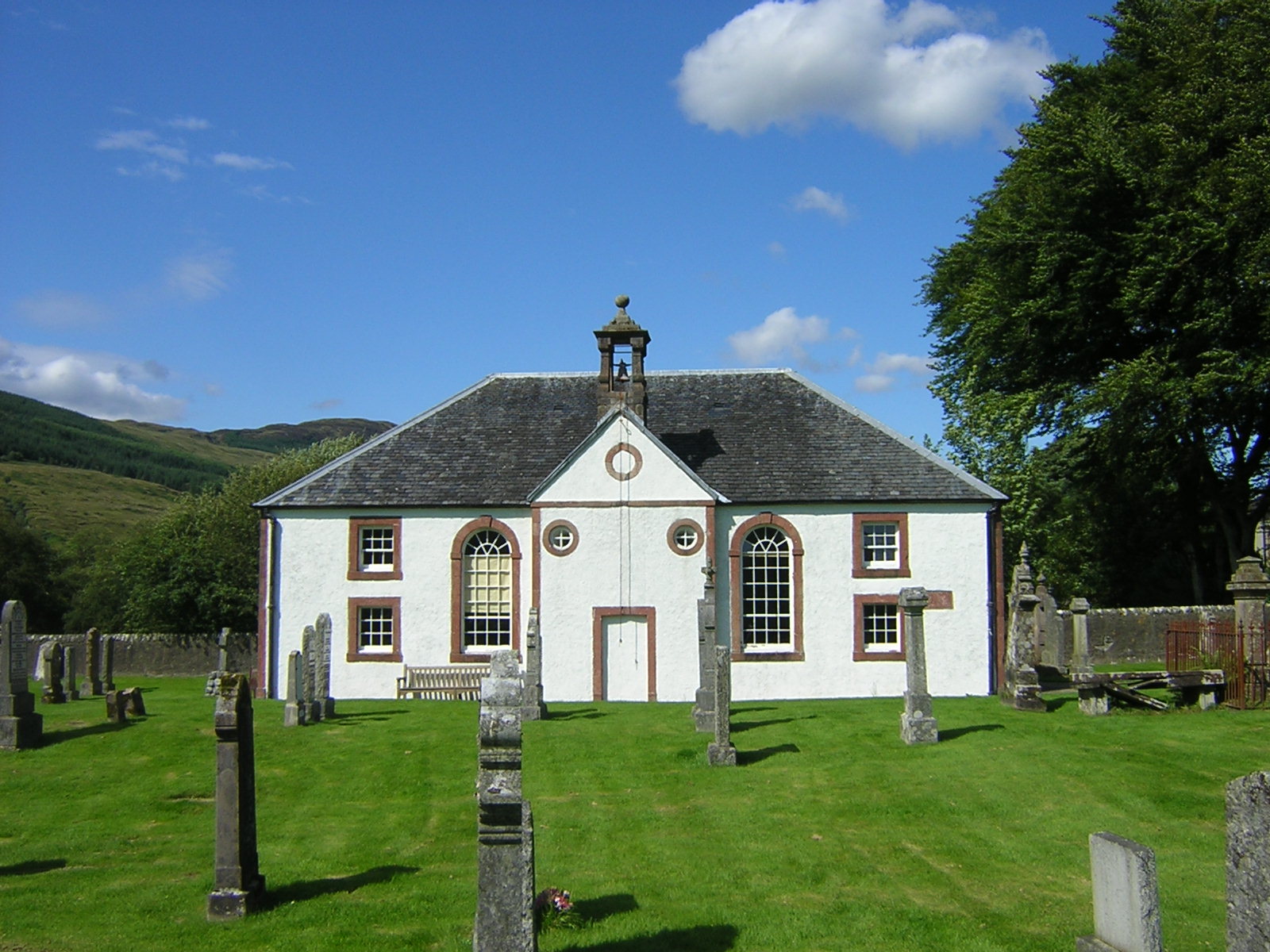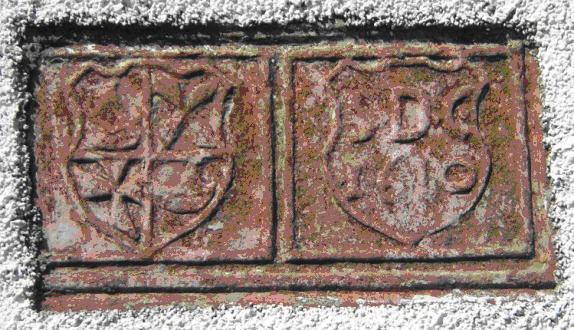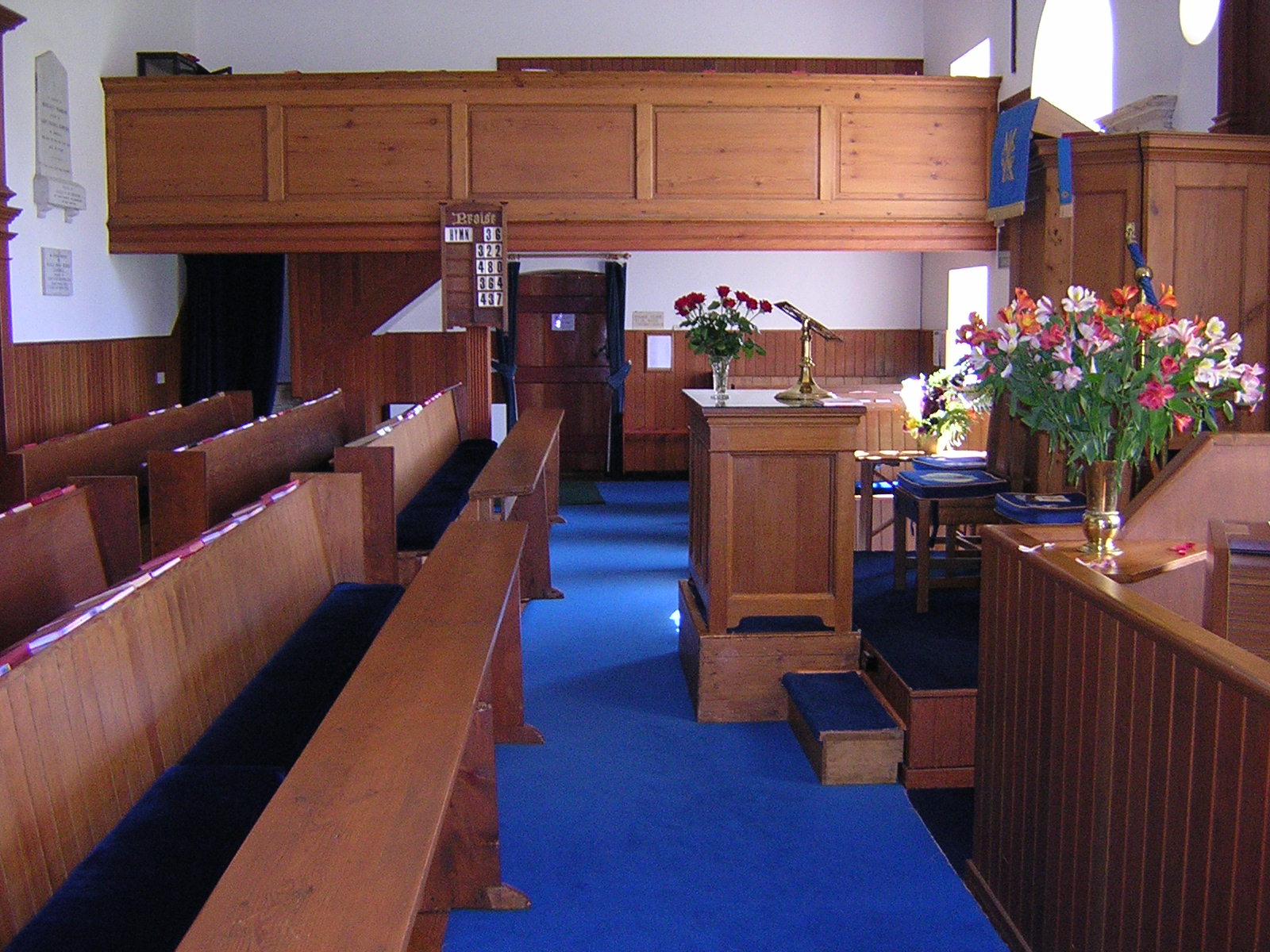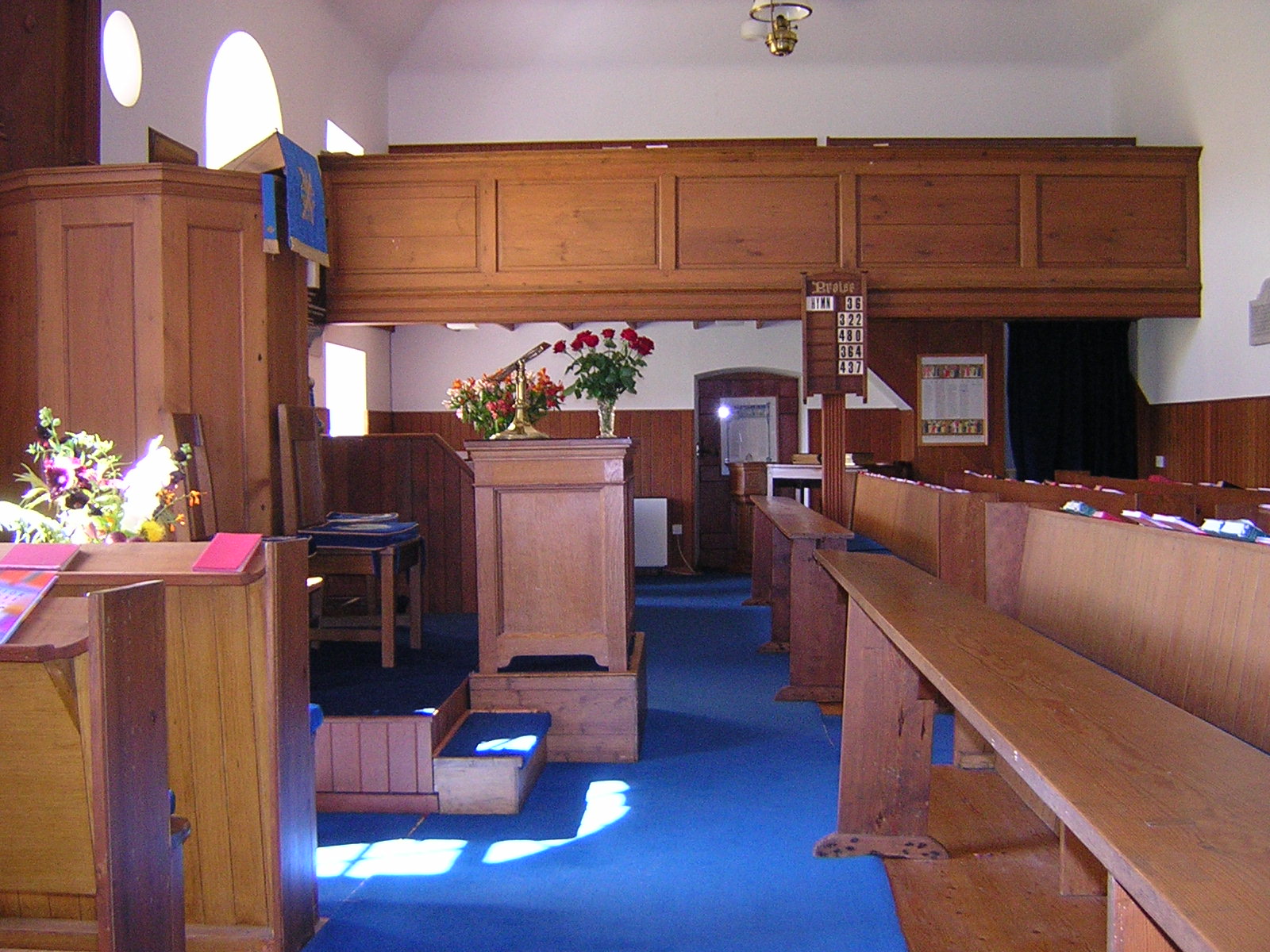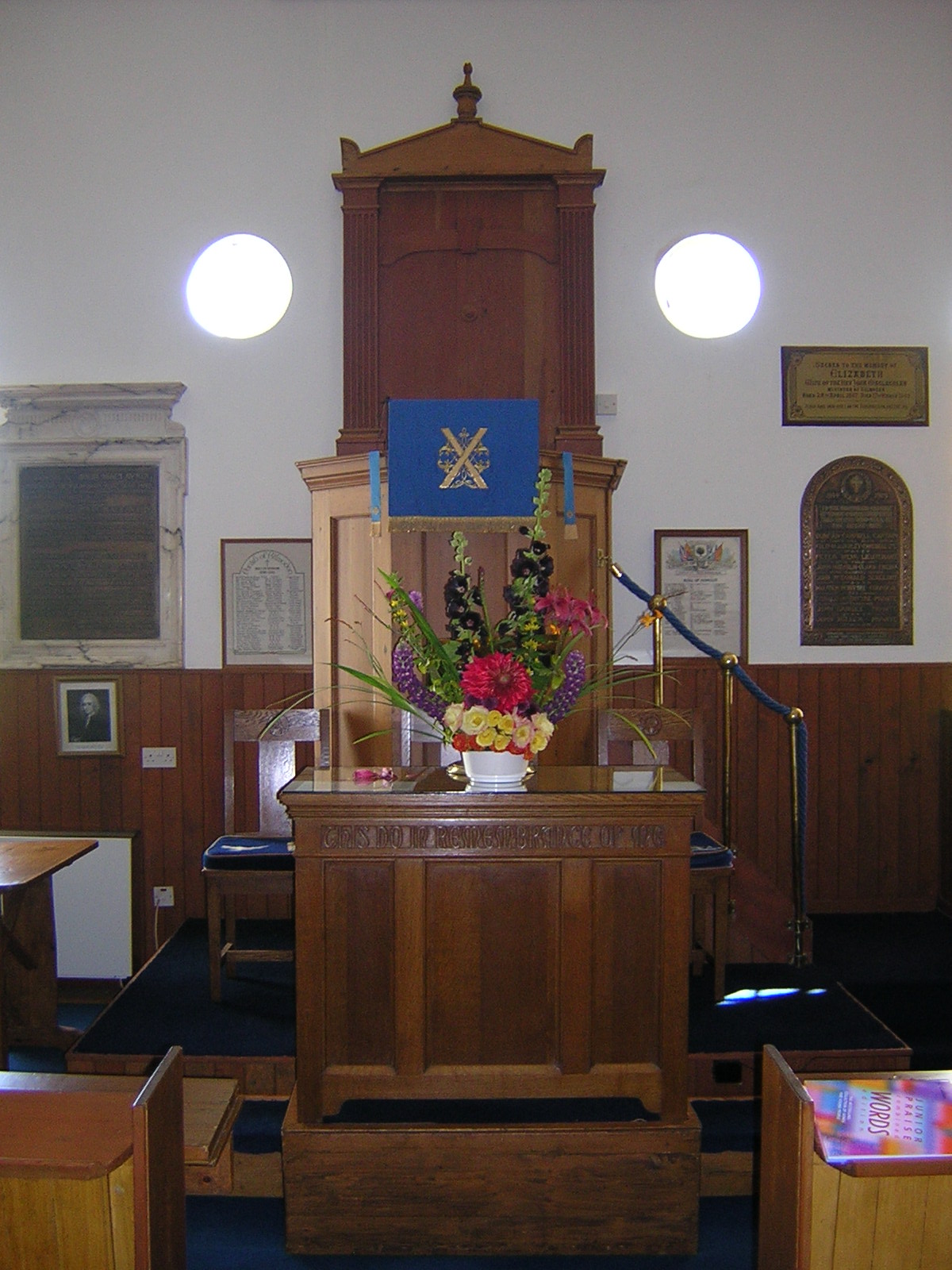Kilmodan Church
The existing church is a Georgian T-plan church built in 1783 on the site of an earlier church of 1610 or before. The earliest Christian settlement was on the hillside to the east of the present building and thought to be contemporary with St. Columba. The Christian presence in Kilmodan is mentioned in ecclesiastical documents in 1250 and 1299.
The church is of harled rubble with painted sandstone quoins and dressings, a plain sandstone eaves course and a hipped slated roof. A modern ‘Session Room’ has been added at the rear of the building.
A feature of the south elevation is the armorial stone with the initials of Sir Duncan Campbell of Auchenbreck and the date 1610 which suggests the building or repair of the church at that time.
St. Modan, to whom the church is dedicated, was an early Celtic saint who lived around the time of St. Columba.
20th Century Restoration
The church was restored in 1983 at a cost of £106,418. The interior retains its original layout with the galleries of three of the local Campbell families centred on the octagonal pulpit. Each gallery has its own staircase adjacent to an external door. A feature of the interior is the two long communion tables at the front pews.
The interior was lit by a large cupola which was replaced by a smaller one during the restoration. The two rounded windows, or oculi, visible from the outside would have shone towards the pulpit which was originally on the other side of the church.
The interior features a number of memorials and a list of the ministers of the charge dating from 1575. One significant memorial is to the Reverend John MacLaurin and his two famous sons: John an eminent minister and theologian and Colin, professor of mathematics at the University of Glasgow and author of MacLaurins Mathematical Theorem.
The three galleries
Legend has it that the different branches of the Campbell family fell out with each other hence the three galleries having their own stair and external door. This allowed the three branches of the family to attend church without having to pass or speak to each other.
Church and Parish
Since the Scottish reformation Kilmodan Parish Church has been a Church of Scotland charge. It was united in 1957 with neighbouring Colintraive Parish Church to become the congregation of Kilmodan and Colintraive. Both the Kilmodan and Colintraive buildings were retained. In 2006 the congregation of Kilmodan and Colintraive was linked with the congregations and parishes of Kyles (in Kames, Tighnabruaich) and with Kilfinan. The new charge has the short title ‘West Cowal’ and the longer explanation Kilfinan linked with Kilmodan and Colintraive and linked with Kyles.
The Graveyard
The graveyard has stones dating back to the 14th and 15th Centuries, with the earliest stones now housed in the Lapidarium. There are a number of early post-reformation stones in the graveyard.
Lapidarium and Carved Stones.
Formerly the mausoleum of the Campbells of Auchenbreck the structure was roofed as a Lapidarium. In 1970 the stones were moved from the graveyard.
The stones are 14th and 15th Century and are of the Loch Awe school of carvers. The stone is schistose and the quality of the stone suggests it would have come from local quarries. In comparison to the other West Highland schools the workmanship is poor, often appearing misshapen and clumsy. In addition the Loch Awe slabs were never inscribed. So we do not know the names of the patrons commemorated.
There are 11 stones in the Lapidarium with number 6 (see photograph) being renowned as the finest example of the Loch Awe school. Stone 11 is the grave slab of Donald McCloy who was minister in Kilmodan from 1609 to 1636.

